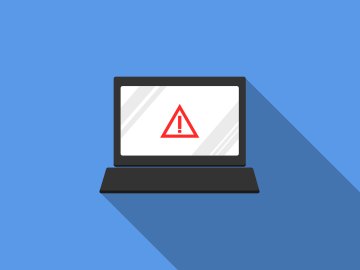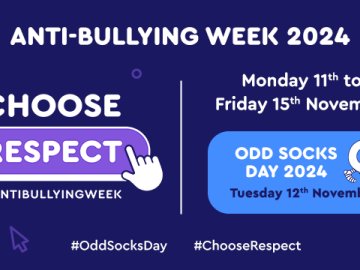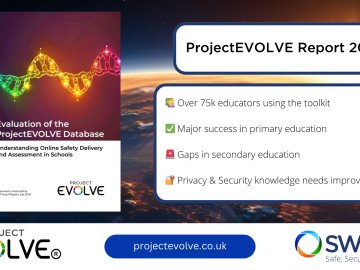Bullying has been a behavioural focus for many schools across the UK and Europe for the last two decades; it represents the crystallisation of how aggressive negative behaviour impacts on the safety and well-being of children and young people and there have been a plethora of anti-bullying interventions developed over that course of history.
Whilst there have been a range of local gains around these interventions, the incidence of aggressive behaviour in the 11-16 age group hasn’t shifted significantly across the whole landscape. In some independent studies, there are suggestions that the incidence of these behaviours is rising, particularly those associated with online technologies.
The recent Ditch the Label UK Annual Bullying survey found that 1 in 2 young people have at some point experienced bullying, with 1 in 4 being bullied at least once within the past year. This means that, based on the UK Census (2012), approximately 2.9 million young people aged 12-20 have been bullied and 1.5 million within the past year. 145,800 are bullied on a daily basis. In addition, the report aimed to understand in more detail why young people “bully” and explored the impact of stress, family dynamics, social conditionality and the perception of self.
From our own engagement with schools, teachers, students and parents on the ground it seems that whilst children understand that bullying “is bad” and can recant the call to “stand up to bullying” many will state that it remains a problem and that it is part of the natural endemic flow of young peoples’ experiences with peers. These commentaries leads one to re-examine current interventions and examine their effectiveness but also the realisation that cultural change could very well be a “slow burn” and that the outcomes and attitudinal change doesn’t appear as quickly as anticipated.
One student told our Conference delegates in ENABLE Zagreb 2016:
“The (anti-bullying) efforts might not see change directly with the children you are directly working with, but it changes attitudes enough so that the benefits are felt by the next generation”.
In other words, attitudes take a long time to embed; former-students instilling those qualities into the way they bring up their own children, a generation on.
And as “Ditch the Label” confirms, it begins with understanding oneself better.
The ENABLE approach
Since 2014, SWGfL have been involved in a project with the European Commission DG Justice to develop an approach to bullying that shifts from the linear perpetrator/victim to understanding and influencing the wider social dynamic around these incidents.
The project focuses on developing the emotional intelligence of students (in this pilot 12-14 year olds) to verbalise, challenge, rationalise and intervene effectively when conflict arises through, amongst other things, SEL teaching and peer support programmes.
The project has very ambitious and aspirational objectives in curating current research and best practice to ultimately shape a more positive whole school and wider social climate; no mean feat. Part of that philosophy is the devolvement of the strategy across the whole school; all staff; all of the curriculum; students and the wider community.
The materials are available for free to be accessed and downloaded - a set of 10 lessons; peer support programme and resources; a research summary, a pack for parents/ carers and an implementation toolkit. Details can be found at enable.eun.org
RESEARCH
The research phase of the project looked at the current bullying landscape and reviewed a range of anti-bullying strategy features and outputs to determine those elements that were the most effective in achieving positive outcomes and cultural change.
In terms of landscape, it was found that patterns of victimisation varied:
Denmark and Greece in 2010 had the lowest victimisation rates among ENABLE countries, similar to each other and rising with age: (from 25% at 11 years to 30% at 15 years).
England follows with slightly higher levels at 11 years, similar at 13 years and lower rates at 15 years.
French Belgium shows very elevated rates across all three ages (52%-54%-47%).
Similarly high are Flemish Belgian 11-year-olds.
Flemish Belgium has the highest rates of victimisation, which markedly decrease with age (from 40% to 23%).
Each ENABLE country conducted a national review of bullying and cyberbullying studies and consolidated the information in a national fiche. These can be found at:
Common features emerged from those interventions that achieved the most positive outcomes:
Disciplinary methods
Parent information (including training and meetings)
Cooperative group work (using video)
Improved playground supervision
Classroom management
Teacher training
Classroom rules
A whole-school anti-bullying policy
A greater number of elements and duration.
A full report from ENABLE research is available here: http://bit.ly/1RDDV1X
A summary report can be found here: http://bit.ly/1TzKOXU
ENABLE RESOURCE
The ENABLE resources build on those features of effective practice and a clear SEL progression of:
Self-awareness: assessing one’s feelings, interests, values, and strengths; maintaining a sense of self-confidence;
Self-management: regulating one’s emotions to handle stress, controlling impulses, and persevering in addressing challenges; expressing emotions appropriately; setting and monitoring progress toward personal and academic goals;
Social awareness: empathising with others; recognising and appreciating individual and group similarities and differences; and recognising and making best use of family, school, and community resources;
Relationship skills: establishing and maintaining healthy and rewarding relationships based on cooperation; resisting inappropriate social pressure; preventing, managing, and resolving interpersonal conflict; and seeking help when needed;
Responsible decision making: making decisions based on consideration of ethical standards, safety concerns, appropriate social norms, respect for others, and likely consequences of actions; applying decision-making skills to academic and social situations; and contributing to the well-being of one’s school and community
ENABLE supports these through a number of programme elements:
Teaching resources; a set of ten lesson plans that follow the above SEL progression intended to seed ideas and understanding. They are further supported with individual PowerPoint presentation materials; student activities and resources; links and extension activities. A planning overview can be found here: http://bit.ly/2ekvsZN
Staff development resources; a video-based resource running through programme principles and implementation with a simple “accreditation” mechanism for staff completing the course of study. The video based trading page can be found here: http://enable.eun.org/webinars
Classroom management resources; a booklet “Making ENABLE Work” with copies of resources; classroom management guides and a multi-modal support section that capitalises on particular curriculum strengths and skills to promote a wide and varied set of routes for expression. Making Enable Work can be downloaded here: http://bit.ly/1RBQ8UF
Peer support resources: a full peer-support programme that not only provides for schools to prepare to deliver a peer support scheme but also includes support materials for students themselves to manage their own anti-bullying support strategy
Parent resources: a booklet that supports parents in adopting ENABLE principles when working with their own children in managing behaviour to provide consistency of message with the school programme
ENABLE BOOK for Educators and Children’s Professionals: published by the Council of Europe, this book provides commentary on the current anti-bullying landscape and interventions, written with a wide group of experts currently working in this field.
The full ENABLE resource set can be found here: http://enable.eun.org/implementing_enable/
Download the FULL resource set here: http://bit.ly/2eTZgc8
It is important to know that all of these resources are FREE to use in their entirety.
Find out more about ENABLE from our project page.






